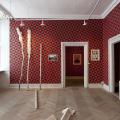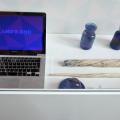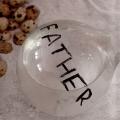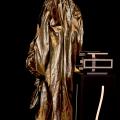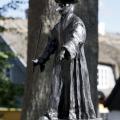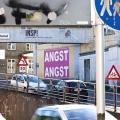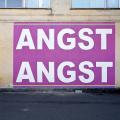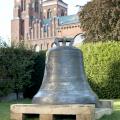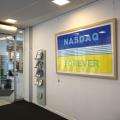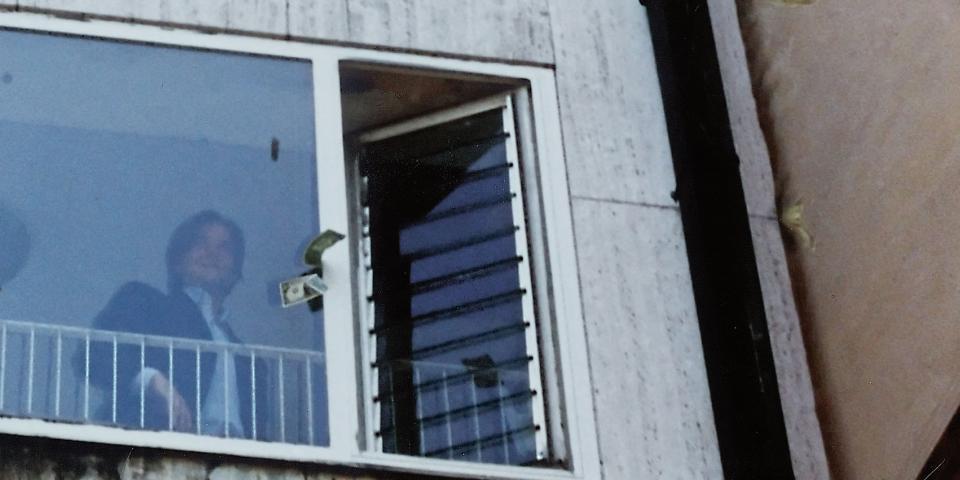
Kapital
Henrik Plenge Jakobsen belongs to the 1990’s generation group of artists who moved the art out of museums and galleries - out among people, and into public spaces. He is part of the group of international artists who were enrolled in the ”relational aesthetics” theory, which deals with the potential of art to create social relations. Plenge Jakobsen works with sculpture, installation and performance art, alone and in collaboration with others, and he has a long line of exhibitions behind him in museums and other exhibition venues in Denmark and abroad.
The exhibition Capital takes place both indoors and outdoors. The ground floor of the museum forms the base of the exhibition, which then moves into Roskilde city with posters, engaging performances, sculptural interventions and so on. Important societal institutions, such as the school, police station and church, form the basis of this exhibition. A guide including a city map tells of the whereabouts of the works while QR codes placed next to the works explain their meaning.
Read more at www.henrikplengejakobsen.net
Kapital is a part of The Museum in the city
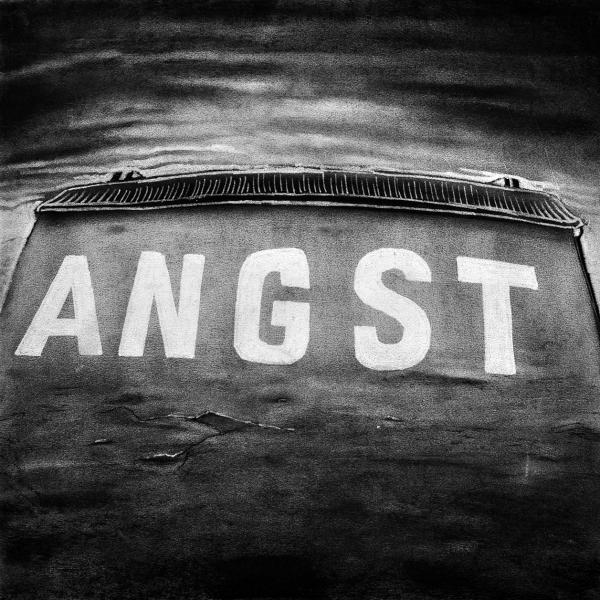
ANGST, 1999
Henrik Plenge Jakobsen
Wall painting 450 x 750 cm
INSP, Køgevej 4-6
Wall painting originally carried out for the English town of Wallsall, which is trying to reestablish itself after a period of industrial decline.
Illustration by Jakob Boeskov

Catherine Wheels (Liberté Egalité Fraternité), 2013
Henrik Plenge Jakobsen
Sculpture: Wood, Steel
In front of the Museum of Contemporary Art
The Catherine Wheel was a blasphemous act in which body parts were displayed after capital punishment as a warning to the populace. The construction, also used as a torture device, was popular mainly in Northern Europe and in the British Isles from the Middle Ages up until the elimination of death penalty following the Enlightenment. Initially shown under the title Catherine Wheel at the Rotterdam Centraal railway station in 2011, it may be seen as a tribute to Pieter Bruegel and as a monument to free thought and the triumph of death.
Illustration by Jakob Boeskov
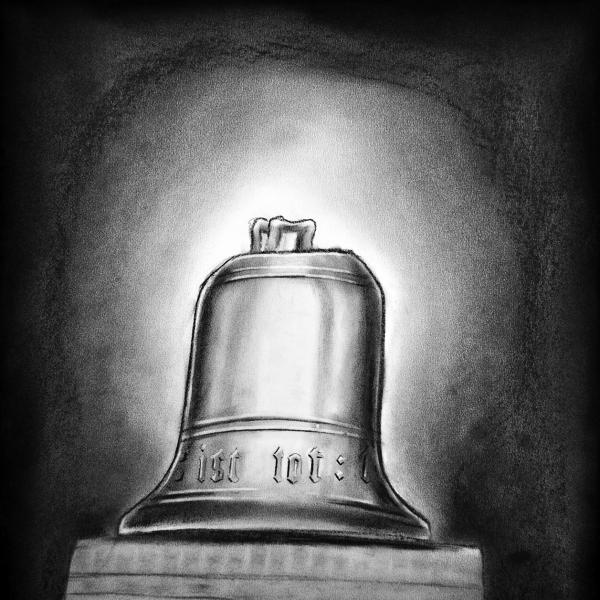
Die Glocke, 2007
Henrik Plenge Jakobsen
Church bell: Bronze, railway ties
160 x 140 x 140 cm
Museum of Contemporary Art, Stændertorvet 3D, The Palace Garden
A cathedral-size church bell featuring an inscription of a Friedrich Nietzsche quote from The Gay Science, 1882: "Gott ist tot! Gott bleibt tot! Und wir haben ihn getötet! Wie trösten wir uns, die Mörder aller Mörder?" ("God is dead. God remains dead. And we have killed him. How shall we comfort ourselves, the murderers of all murderers?") The typeface is Gutenberg, the same used for printing the first Bible. The 1,700-kilogram bell has been tuned in D, cast by Eifeler Bell Foundry and blessed after casting.

Doktor Schnabel, 2013
Henrik Plenge Jakobsen
Sculpture: Bronze, stone
173 x 26 x 26 cm
Sct. Jørgensbjerg Church, Kirkegade 26
The plague doctor is bad news. Doctor Schnabel, a name by which he was also known, was often a secondrate doctor who claimed to cure the sick with a touch of his stick. In reality he was hardly capable of doing more than diagnosing those suffering from the disease. The plague doctor is placed at the cemetary where archeological excavations have uncovered skeletons from the Middle Ages with vaguely flourescent bones, considered to stem from special bacteria related to a leprosy epidemic that once struck Roskilde. The Black Death and the successive waves of plague were particularly hard on Roskilde and by 1354 the population was so decimated that the king forgave all those who had been sentenced to death. As we know, this was not a permanent measure.
Illustration by Jakob Boeskov

Anarchist Knight, 2007
Henrik Plenge Jakobsen
Wallpaper
53 x 1000 cm
Roskilde Gymnasium, Bondetinget 1 & Museum of Contemporary Art
Wallpaper designed for the exhibition Freak Show at the Musée d'Art Contemporain in Lyon. The pattern is composed of an ornament from the Middle Ages combined with the red and black color scheme fo the anarchist flag. The wallpaper is a tribute to the rigid ornament with a salute to the absence of rulers.
Illustration by Jakob Boeskov
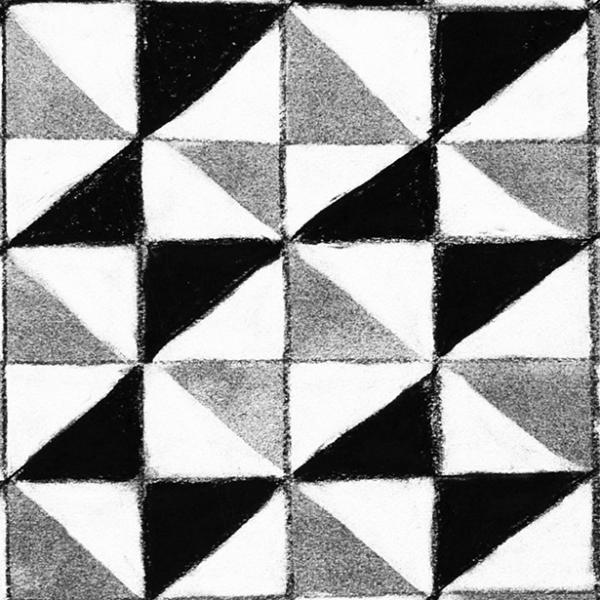
Liberté Egalité Fraternité, 2013
Henrik Plenge Jakobsen
Poster, 59,4 x 84,1 cm
Put up in various places in the cities of Roskilde & Copenhagen.
The poster design was created with freethought, the Enlightenment and the French Revolution in mind and uses a pattern originating from the feudal period. An identical pattern appears in the wallpaper Anarchist Knight.
Illustration by Jakob Boeskov
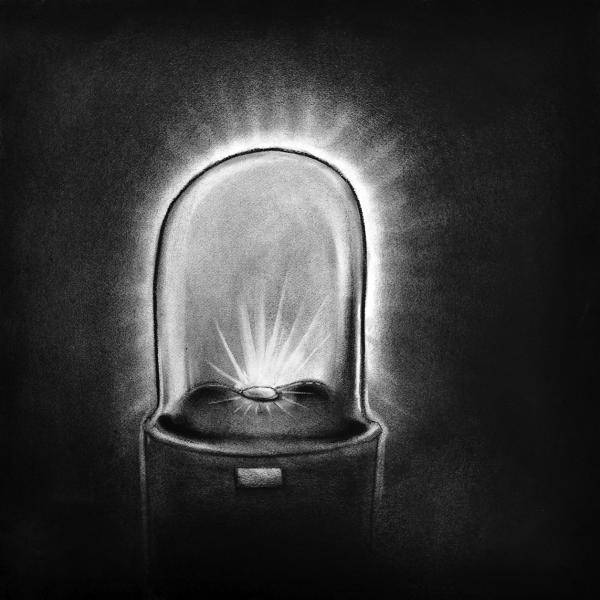
My primoridal dime
Henrik Plenge Jakobsen
Installation: Gold, glass, plaster
160 x 35 x 35 cm
Danske Bank, Stændertorvet 5
Inside the money bin is the primordial dime, a lucky coin that serves as a memory of moderate conduct, the discipline to postpone any needs and to accumulate capital rather than spend it. The thrill of wealth, however, includes fear of losing it. The Beagle Boys, or perhaps even the Office of Financial Stability, could be just around the corner
Illustration Jakob Boeskov
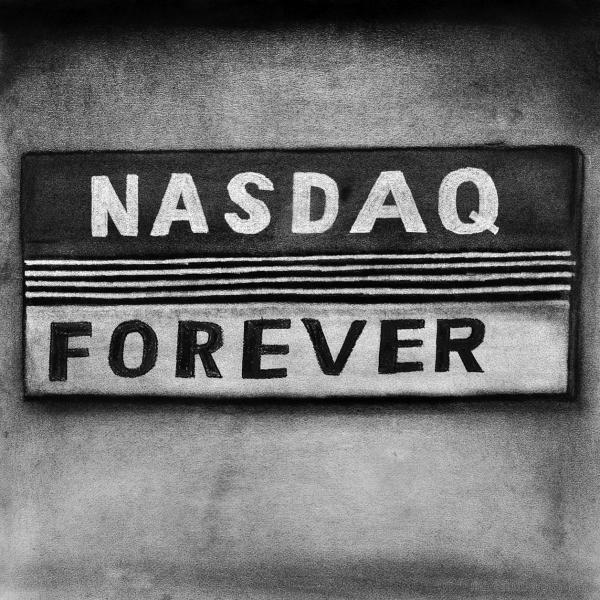
Nasdaq Forever, 2000
Henrik Plenge Jakobsen
Gouache on paper
290 x 130 cm
Danske Bank, Stændertorvet 5
Illustration by Jakob Boeskov
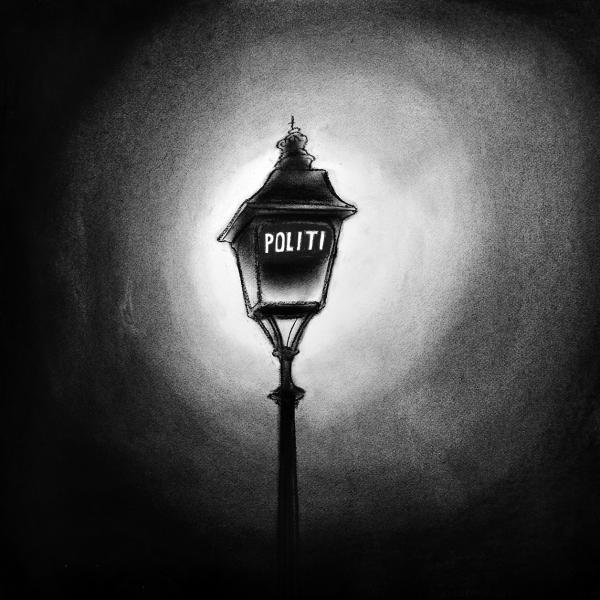
Victorian Control, 2013
Henrik Plenge Jakobsen
Lamp post, vinyl letters
370 x 20 x 20 cm
Local prison, Jernbanegade 21
I often wonder about those authorities of control that seek to maintain order and the legislation that we, as individuals and as a collective, have agreed upon, or which others have agreed upon on our behalf, with or without our consent.
Illustration by Jakob Boeskov

